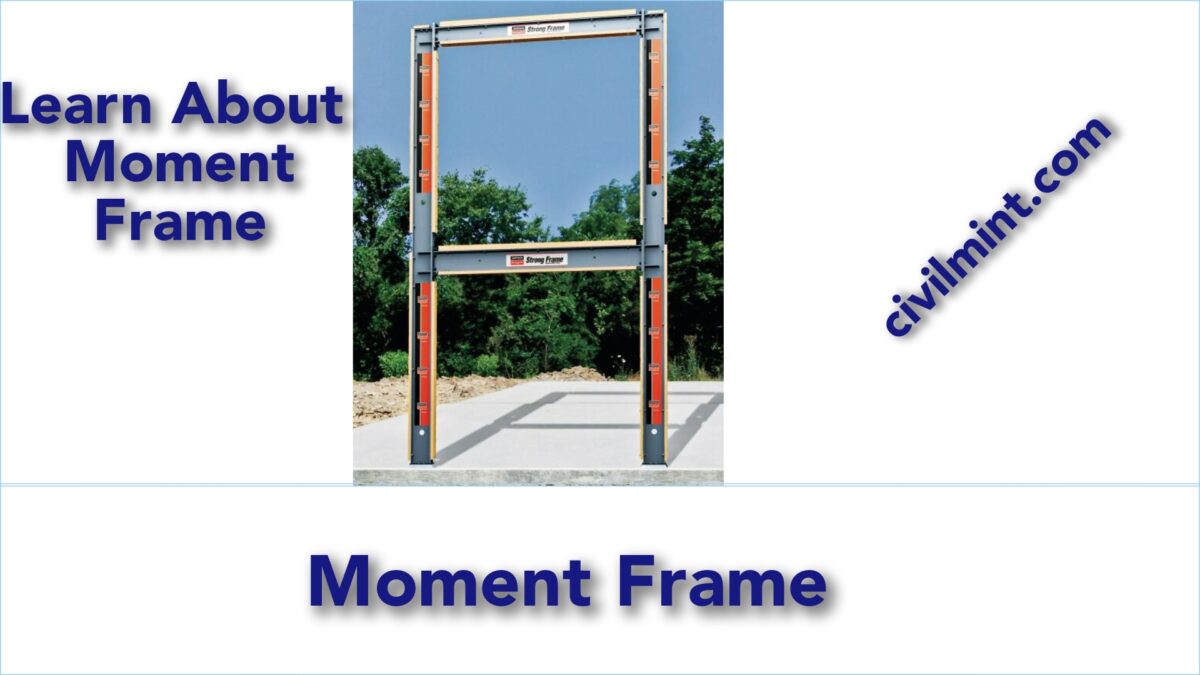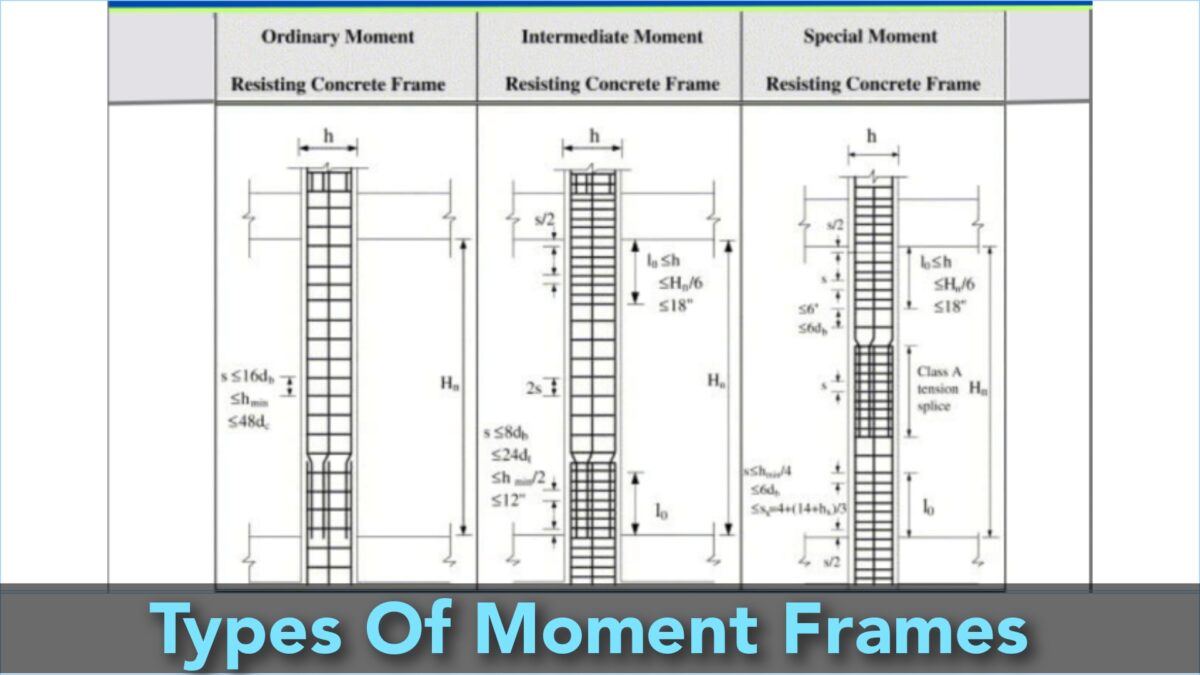Moment Frame is a type of structure made up of interconnected members that are joined together in a two-dimensional series. Their main purpose is to resist sideways forces caused by things like wind and earthquakes.

Moment Frames are really good at this job and are often used in places where earthquakes are common. Although designing a building to resist earthquakes can be expensive, Moment Frames are a great option for doing it effectively.
Table of Contents
What Is Moment Frame?
A Moment Frame is an assembly consisting of beams and columns that are rigidly connected to each other. The connection between the beams and columns is formed through welding and bolting, and it is known as a Moment connection. The primary purpose of Moment frames is to provide resistance to lateral forces by developing bending moment and shear force in the members and joints.
The Moment frames are designed to carry both horizontal and vertical loads in the same plane and are rigidly connected to resist overturning forces and lateral forces. The strength of the Moment frames while designing it to carry seismic loads mainly depends on the stiffness and strength of the members.
The connections in Moment frames rely mainly on the rigid connections to transfer lateral loads to the foundation underneath. Moment frames have the advantage of being more capable of deformation with little stiffness compared to other types of frames.
The analysis of Moment frames is more complex than that of other types of frames, and the construction cost required for Moment frames is higher. However, Moment frames are preferred for their ability to resist earthquake loads. It is also noteworthy that Moment frames are not typically infilled with materials such as concrete or masonry, which can significantly alter their behavior.
Types Of Moment Frames
Three types of moment frames are Ordinary Moment Frame (OMF), Intermediate Moment Frame (IMF), and Special Moment Frame (SMF).

Let us know about these three types of moment frames.
1. Ordinary Moment Frame (OMF)
An Ordinary Moment Frame (OMF) is a type of portal frame system that provides little to no resistance against lateral movement. OMFs are typically used in areas with zero or low seismicity. These frames are designed to resist gravity loads but may not provide adequate support against lateral loads.
2. Intermediate Moment Frame (IMF)
An Intermediate Moment Frame (IMF) is designed to release limited inelastic deformations in the moment frames that occur due to lateral forces. These frames are designed to provide moderate to high levels of lateral resistance and are used in areas with moderate to high seismicity. The IMF is designed to resist lateral loads through a combination of inelastic deformation and elastic behavior. The intermediate moment frames undergo limited inelastic deformation during a seismic event, which helps to protect the structural integrity of the building.
3. Special Moment Frame (SMF)
A Special Moment Frame (SMF) is one of the strongest and most stable connections in the portal frame system. These frames are designed to withstand significant inelastic deformation in the members due to lateral forces. SMFs are typically used in areas with high seismicity and are designed to provide maximum lateral resistance. SMFs are designed to resist lateral loads through a combination of inelastic deformation and elastic behavior. The connections in an SMF are designed to be ductile, which means they can absorb energy during a seismic event and prevent damage to the structural members.
Moment Frame Vs Braced Frame
| Property | Moment Resisting Frame (MRF) | Braced Frame |
|---|---|---|
| Structural System | Steel or Reinforced Concrete | Steel or Reinforced Concrete |
| Primary Load Resistance | Moment (Bending) | Axial and Shear |
| Secondary Load Resistance | Shear and Axial | N/A |
| Frame Stiffness | High | Low to Moderate |
| Ductility | High | Low to Moderate |
| Use of Bracing | No | Yes |
| Construction Complexity | High | Low to Moderate |
| Seismic Performance | Good | Good to Moderate |
| Building Height Limit | Up to 40 stories | Up to 20 stories |
Sum Up
The selection of the appropriate type of moment frame for a building depends on the seismicity of the area and the design requirements of the building.
The Ordinary Moment Frame (OMF) is designed for areas with low seismicity, the Intermediate Moment Frame (IMF) is designed for areas with moderate to high seismicity, and the Special Moment Frame (SMF) is designed for areas with high seismicity.
Each type of moment frame has its unique characteristics, and the selection of the appropriate type of moment frame is crucial for the structural integrity of the building.
Faqs
A Moment Resisting Frame (MRF) is a structural system that engineers commonly use in steel and reinforced concrete buildings to resist lateral loads such as wind and earthquakes. MRFs transfer the load through moment connections between beams and columns.
Moment Resisting Frames have several advantages, including providing high stiffness, good ductility, and the ability to withstand high levels of lateral loads. They also allow for a flexible and open floor plan, as there are no diagonal bracing elements.
There are two types of Moment Resisting Frames: concrete and steel. Concrete Moment Resisting Frames consist of reinforced concrete beams and columns, while Steel Moment Resisting Frames are made up of steel beams and columns.
Engineers design Moment Resisting Frames by considering the expected lateral loads, the building’s height and location, the materials used, and the seismicity of the site. They use software to model and analyze the behavior of the MRF under different loading scenarios to ensure it can withstand the anticipated loads.
While Moment Resisting Frames offer many advantages, they are not suitable for all building types. For example, they can be more expensive to construct than other types of structural systems. Additionally, MRFs can be more susceptible to damage if engineers do not properly design or construct them, particularly if they are subjected to high levels of lateral loads.
